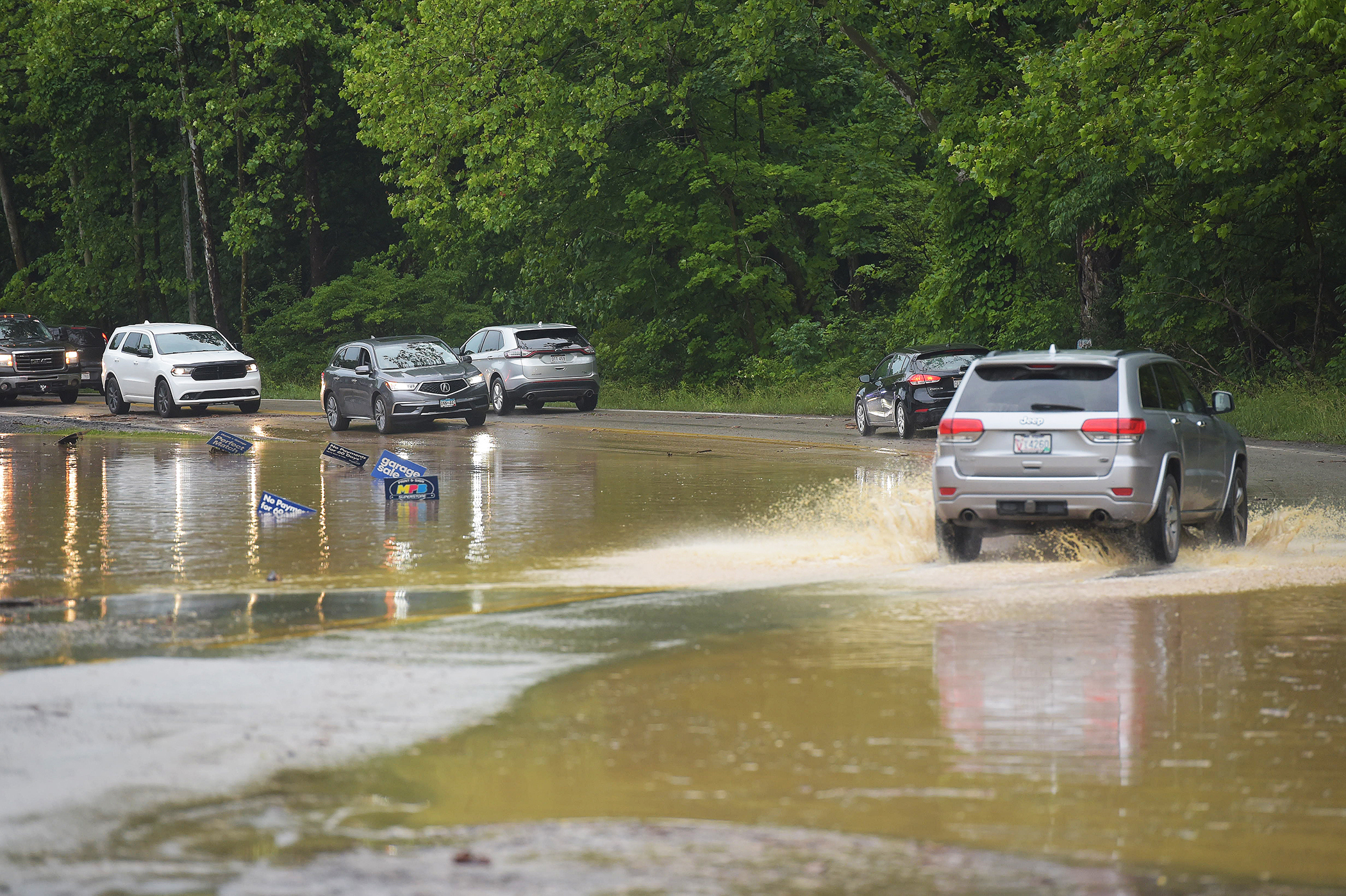MORGANTOWN — “We have an issue. A big issue that needs to be addressed,” Evan Hansen said.
Hansen, one of Monongalia County’s representatives in the West Virginia House of Delegates, was speaking to the Morgantown Utility Board’s Board of Directors in his capacity as founder and president of environmental consulting firm Downstream Strategies.
His presentation came in light of two recent rain events — one in mid-June and one in late July — that resulted in unprecedented flooding in and around Morgantown.
Hansen said using official data from the National Oceanic and Atmospheric Administration (NOAA), collected at the Morgantown Municipal Airport, the July 29 storm was stronger, but both fell just short of the 100-year rain event mark.
However, using a series of seven rain gauges located across town, both hit that mark and then some.
“All but one [gauge] exceeded 100-year storm, four exceeded 500-year storm and two exceeded 1,000-year storm,” Hansen said of rain levels produced during a two-hour window July 29.
Hansen said increased storm intensity falls right in line with the recently published findings of the United Nations’ Intergovernmental Panel on Climate Change, which declared a “code red for humanity.”
He said that report noted the northeast region of the U.S., including West Virginia, is seeing a greater recent increase in extreme precipitation than any other region of the country.
He went on to explain that the region saw a 70% increase in the amount of precipitation falling during the heaviest rain events during a 50-year study window that ended in 2010.
“It’s not that we’re projected to start seeing heavier downpours. We’re seeing the heavier downpours,” Hansen said.
The IPCC concluded climate-related events would increasingly compromise infrastructure, which is of particular interest to MUB.
MUB Board Vice Chair Barbara Parsons said the utility board needs to adapt, but certainly is not alone in that capacity.
“We’ve had a great deal of growth and we’ve had a lot of coverage of topsoil, and my personal opinion is, we don’t do enough, and I’m not talking about MUB per se, but as a culture in this area, we don’t do enough planning.”
Monongalia County Planning Director Andrew Gast-Bray agreed.
“It’s a complex issue with a number of factors, but it is definitely a factor,” he said when asked if development plays a role in the kind of flooding that’s occurred in recent months.
“That doesn’t mean development is bad. People need places to live, but our patterns are often about a lot more impervious surface, in the development style of the late 20th century, which we’re still suffering from,” he said.
Gast-Bray said the push for more and more cleared land and flat spaces are creating housing and shopping and parking and roads, and simultaneously eliminating the natural sponge that soaks up rainfall.
“And when you’re talking about the hills and hollers of West Virginia, that’s a lot of extra water,” he said, adding that it’s impractical to ask anyone to plan or design for 1,000-year rain events, but it’s logical to consider these “What if” questions when considering comprehensive planning or county-wide subdivision regulations, both of which are underway.
“How can we make a network that’s better — more open channels, restoring streams that we’ve piped? There’s no way we can pipe everything and expect it to be OK. Because as we’ve seen, those big rain events pull all kinds of debris and plug those things up,” he said, adding, “It’s a big, complicated thing, and we’re only able to address a bit of it, but we have to do our part.”
TWEET @DominionPostWV




